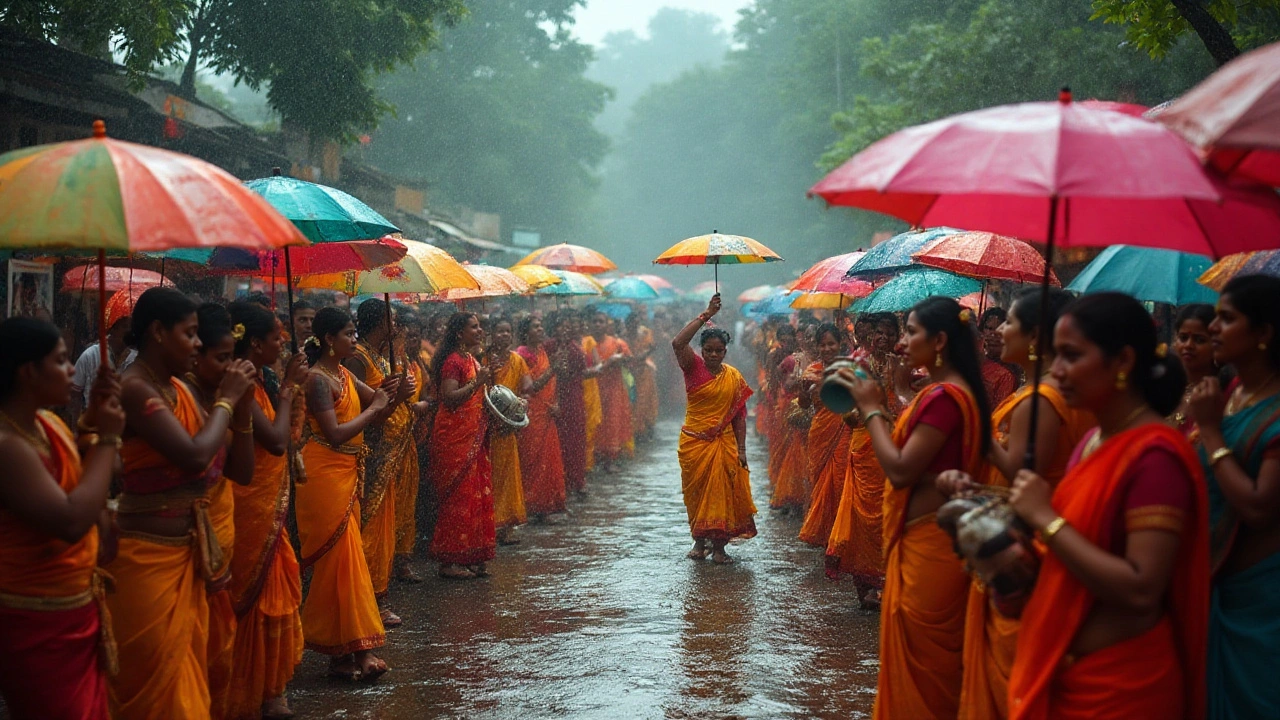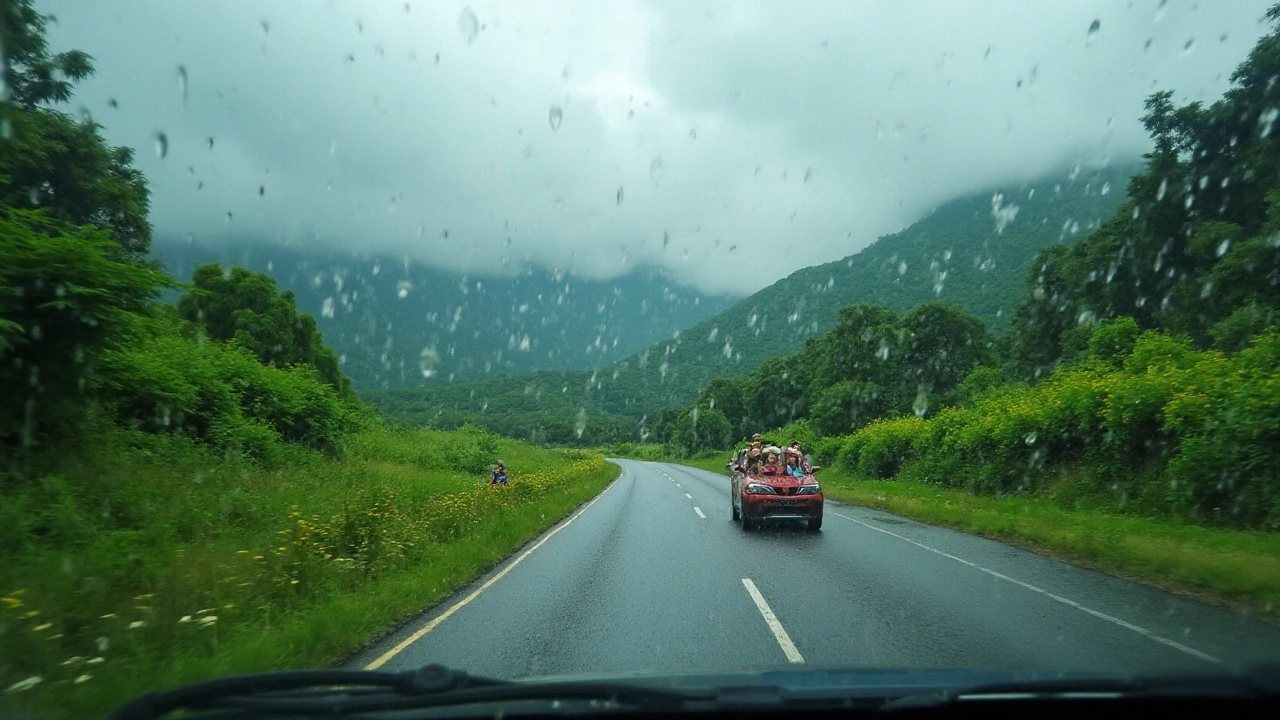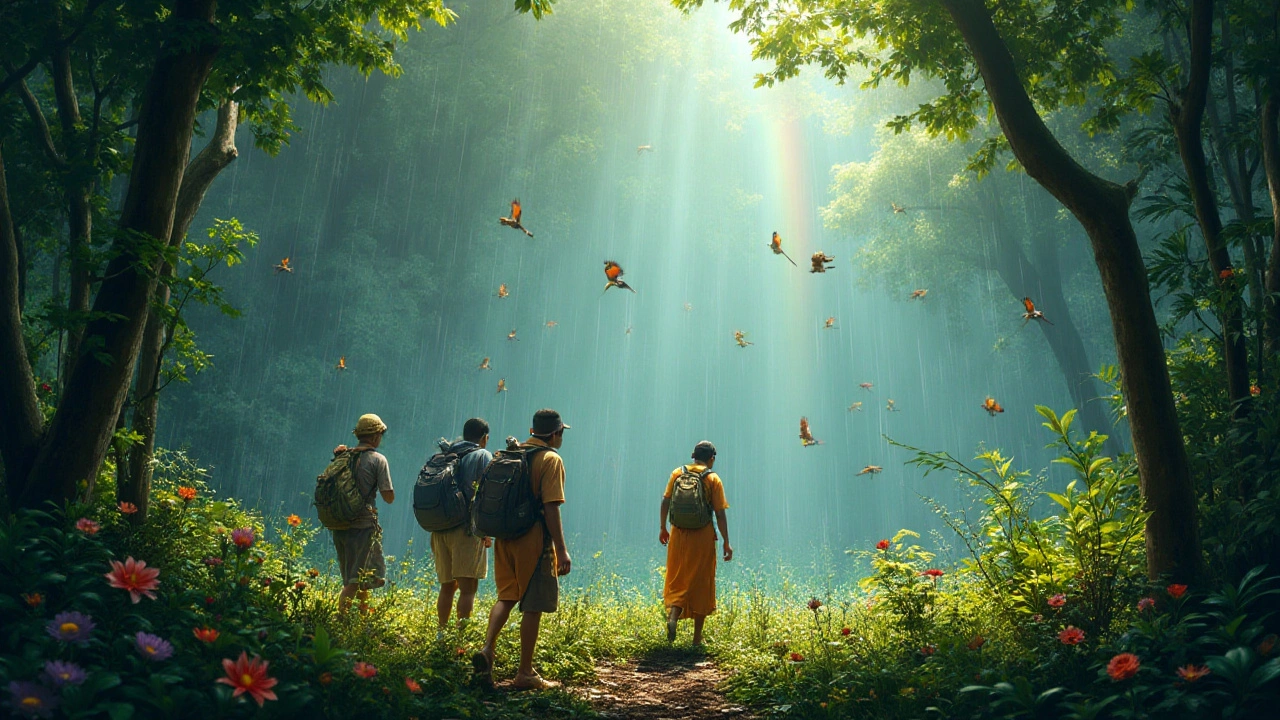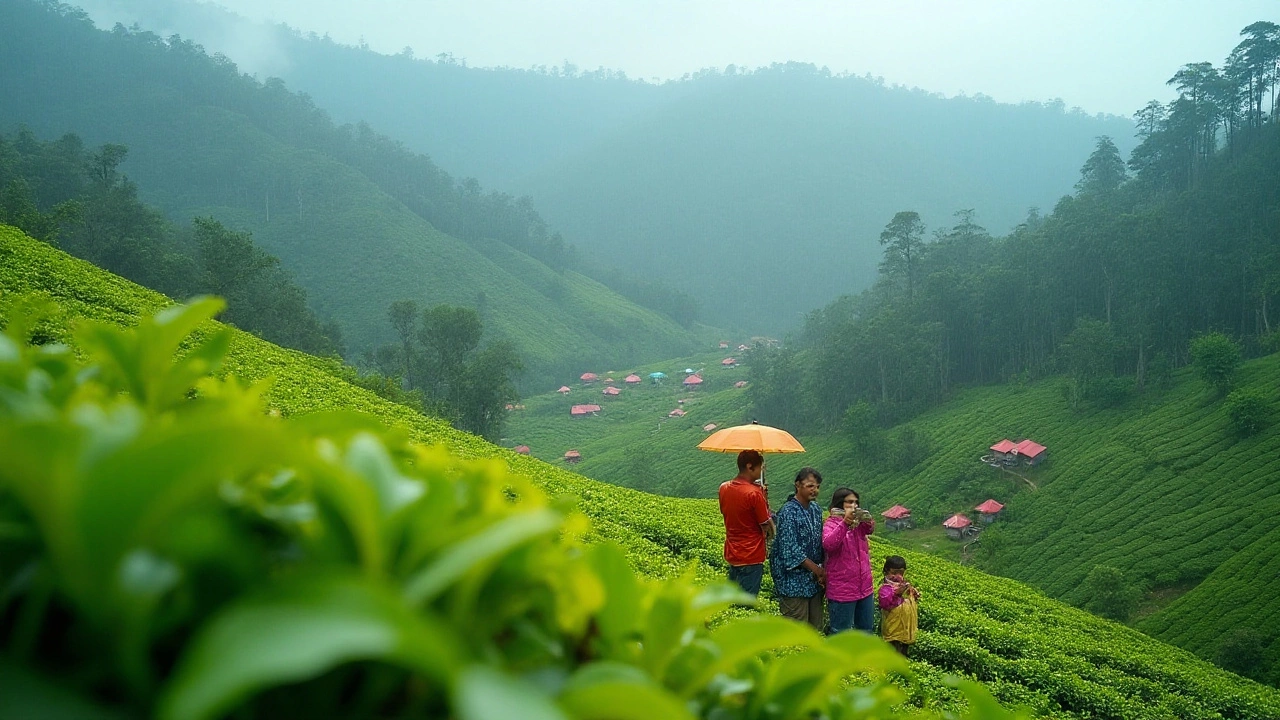The rainy season in South India brings a transformation like no other. When the skies open up with life-giving rains, the landscapes burst into vibrant hues of green, turning the region into a painter's paradise. As the Southwest Monsoon arrives in June, followed by the Northeast Monsoon in October, this part of the world becomes a haven for those who appreciate nature in its most unbridled form.
For travelers, this period offers a chance to see South India through a different lens – one where misty hill stations, cascading waterfalls, and wildlife sanctuaries brim with life. While some might hesitate to explore during this time due to concerns about weather and logistics, there is a certain charm in navigating these challenges and discovering the beauty tucked away in every corner of the southern lands. Understanding the rhythms of the rain and preparing wisely can lead to an unforgettable journey through this monsoon wonderland.
- Introduction to South India's Monsoons
- Popular Destinations During Rainy Season
- Cultural Experiences and Festivals
- Travel Tips for Monsoon Season
Introduction to South India's Monsoons
Brimming with a mix of enchantment and unpredictability, the monsoon season in South India is a phenomenon deeply intertwined with the life and culture of the region. Spanning from June through November, the monsoons are split into two distinct phases: the Southwest Monsoon and the Northeast Monsoon. The Southwest Monsoon typically commences in June, gracing the western coast and gradually making its way inland. It is during this time that Kerala, with its emerald backwaters and lush tea plantations, becomes the first recipient of the season's bounty. The Northeast Monsoon follows suit, arriving in October, bringing generous showers to Tamil Nadu and the southeastern coast.
This climate pulsation is not just about rain; it's about the soul of South India awakening in unison with nature. Rivers swell with vigor, and reservoirs overflow, revitalizing the land and its people. The agricultural communities, which form the backbone of this region, rely heavily on these rains to nurture crops like rice and coffee, ensuring both livelihood and sustenance. An interesting fact is that approximately 80% of India's total rainfall is received during the monsoon season, highlighting its critical importance.
The India Meteorological Department states, "The monsoon is crucial for the Indian economy, replenishing groundwater and ensuring good agricultural yield," a testament to its integral role in the nation's ecosystem.
For those planning to explore South India during these months, understanding the rhythm and impact of the monsoons is key. While the rains can disrupt daily activities, they also offer a refreshing respite from the summer heat. The monsoon transforms landscapes into lush paradises, with places like Munnar, Coorg, and the Western Ghats turning misty and magical. According to meteorological data, Kerala can receive up to 3000 mm of rainfall during the season, a staggering volume that illustrates the power of the monsoons.
Travelers often find themselves witnessing not just a change in weather, but a celebration of rain. Festivals such as Onam in Kerala celebrate the harvest and the life-giving rains, adding a vibrant layer of cultural experiences to your journey. Embracing the rain, rather than avoiding it, can lead to unexpected adventures – like watching a traditional Kathakali performance while the rain drums on the roof or savoring hot chai with local snacks as the world outside turns a lush, inviting green.

Popular Destinations During Rainy Season
Exploring South India during the rainy season can be a revelation for the uninitiated. The monsoon breathes life into its varied landscapes, making many destinations particularly appealing. From the serene backwaters of Kerala to the majestic hills of Tamil Nadu, each location offers a distinctive blend of culture, nature, and adventure. Munnar, nestled in the Western Ghats, becomes a sight to behold with its rolling tea plantations draped in mist. The monsoon turns Munnar into a lush paradise where the sound of raindrops hitting tea leaves creates a melody that is both soothing and invigorating.
Kerala's backwaters are another must-visit during this period. Hop onto a traditional houseboat in Alleppey and glide across tranquil waters, surrounded by swaying coconut palms and vibrant flora that spring to life post-rain. It's a timeless escape, perfect for those yearning for peace and quiet, interspersed with sightings of bustling village life along the banks. Moving towards Karnataka, Coorg presents itself as an enchanting getaway with its dense forests and coffee plantations. This 'Scotland of India' is famed for its foggy mornings and picturesque valleys, making it a romantic destination that bathes in monsoon glory.
An exploration of South India wouldn't be complete without a trip to Ooty and Kodaikanal, two popular hill stations in Tamil Nadu. Ooty stands out with its quaint charm, rolling hills, and the iconic Nilgiri Mountain Railway, which is a UNESCO World Heritage Site. When the rains come, the landscape appears more vibrant, with wildflowers carpeting the hills. Kodaikanal offers tranquil lakes, cascading waterfalls, and thick woody slopes – a haven for nature lovers. This picturesque spot is known for the enchanting Coaker's Walk, which offers panoramic views of the valleys below, often cloaked in clouds during the monsoon.
If you venture to the East Coast, Pondicherry provides a unique blend of French colonial architecture and Indian vibes. Rain kisses the charming streets, enhancing the allure of its colorful buildings and cozy cafes. The rain turns the Bay of Bengal’s shores into a dramatic setting, inviting meditators and beach wanderers alike. In Andhra Pradesh, Araku Valley surprises many as a lesser-known gem. It's known for its majestic waterfalls which come alive as the rains intensify, presenting a dazzling show of nature's power and beauty.
To help visualize the diverse allure of these places during the monsoon, consider the data charting average rainfall in millimeters over these destinations:
| Location | Average Rainfall (mm) |
|---|---|
| Munnar | 560 |
| Alleppey | 275 |
| Coorg | 230 |
| Ooty | 190 |
| Kodaikanal | 135 |
| Pondicherry | 320 |
| Araku Valley | 180 |
While many travelers flock to these places in fair weather, don’t miss out on their extraordinary monsoon magic. Embrace the rain as a companion rather than an impediment. As Rabindranath Tagore, a renowned poet, once said,
"The rain showers its blessing over the flowers of the earth."Indeed, the rainy season in South India brings its own special charm, inviting those seeking an experience out of the ordinary.

Cultural Experiences and Festivals
The rainy season in South India heralds not just the arrival of lush greenery but also vibrant cultural spectacles. This time of year is dotted with numerous festivals that encapsulate the rich traditions and history of the region. One of the standout celebrations is the Onam festival in Kerala, which is marked by grand feasts, traditional dances, and the famous snake boat races. This harvest festival, celebrated around August or September, is a tribute to King Mahabali, whose spirit is said to visit Kerala during this time. The event lasts for ten days, and the entire state comes alive with festivities, traditional decorations known as pookalam, and the tantalizing aroma of Onasadya, a special vegetarian banquet served on banana leaves.
Meanwhile, in Tamil Nadu, the festival of Pongal in January coincides with a period of rain, adding a serene backdrop to the celebrations. Pongal is a four-day event that honors the sun god and celebrates the harvest season. Each day of the festival has its own significance—from Bhogi, which involves the disposal of old items in a bonfire, to the main Pongal day where a sweet rice dish of the same name is prepared in clay pots. Cattle play an important role during this festival, especially on the third day, called Maattu Pongal, where cows are decorated and worshipped. It's a fascinating time when the countryside transforms into a scene of joy, faith, and gratitude.
The northeastern parts of the region, like Andhra Pradesh and Karnataka, have their share of cultural havens as well. The monsoon season breathes life into the dance and music festivals. Karnataka's Dasara in Mysore, celebrated with regal grandeur, is an affair not to be missed. Coinciding with the wetter months, the Dasara festival involves grand processions, cultural performances, and vividly decorated elephants parading through the streets. It's a visual and auditory feast that attracts travelers from all over the world.
Interestingly, as the rains bless the land, the rain-related festivals such as the Teej, predominantly celebrated in Karnataka, mesh perfectly with the environment's mood. Teej marks the arrival of monsoon, and it's celebrated by women who sing folk songs, wear henna, and pray for marital bliss. Although it’s modest compared to the other festivals, Teej has its charm and touches the hearts of those who witness it. Villages and towns display a vibrant tapestry of customs and practices, making one's journey not just a travel through landscapes but through time-honored traditions.
As you weave through these cultural festivities, one can't help but feel an overwhelming sense of community and unity that rains seem to conjure up. The monsoons in South India do more than nurture crops; they foster a bond among people, celebrating life in unity. This season serves as a reminder of the profound connection between humans and nature—a relationship far deeper than what meets the eye.
As the respected historian William Dalrymple once noted, "In India, festivals are more than just a celebration—they are recreations of mythical events, living manifestations of the cycles of the universe."
No travel experience in the rainy season would be complete without immersing one's self in these cultural festivals. They offer a window into the heart of South Indian communities, where ages-old legends, epicurean delights, and colorful displays of attire transport you to another realm. With their ability to transport you beyond the ordinary, these festivals are a mesmerizing introduction to the varied and rich tapestry of South Indian life.

Travel Tips for Monsoon Season
Planning a trip during the rainy season in South India requires an extra layer of preparation, but the rewards are well worth it. The region transforms into a lush paradise, promising mesmerizing views and refreshing experiences. However, navigating the monsoon requires a different approach to travel, and here are some tips to help you along the way.
Packing the right gear is crucial. Lightweight, quick-drying clothing, and a sturdy pair of waterproof shoes are your best friends. An all-weather jacket and a compact umbrella will protect you from sudden showers. It's a good idea to keep your gadgets safe with waterproof cover bags and to carry extra plastic bags for wet clothes. Stay comfortable while also ensuring you're ready to dive into adventure, rain or shine.
When choosing your accommodations, consider places that offer both comfort and convenience. Opt for hotels or homestays at higher altitudes to avoid any flooding issues commonly associated with low-lying areas during the monsoon. Many places also offer special deals during this time, so keep an eye out for those. Don't be surprised to find that monsoon discounts make luxurious accommodations significantly more affordable.
Transportation can be tricky, so it's wise to book ahead. Trains and flights often get delayed, and roads can sometimes become less accessible due to heavy rainfall. Hiring local guides can be advantageous, as they know the region's terrain and can help you avoid potential pitfalls. If you're planning for road trips, ensure that your vehicle is properly maintained, and check for the availability of alternate routes, especially in rural areas.
"Monsoon travel can be exhilarating if you prepare adequately. The beauty of South India during this period is best experienced with both caution and curiosity." – Jayesh Mehta, Travel Expert
Food safety is another aspect to keep in mind. While South Indian cuisine during the monsoon is a delight with comforting hot beverages and spicy, warm dishes, ensure that the food is freshly cooked. Drink packaged or boiled water to avoid waterborne diseases. Visiting local markets for seasonal fruits is a must, but be sure they're washed and cleaned properly.
Lastly, immerse yourself in the cultural offerings that South India provides during the rainy season. This period coincides with numerous local festivals celebrating the rain with gusto. Participating in these events can offer deeper insights into the local culture and traditions. Remember that travel insurance is your safety net, making sure you are covered for any unexpected weather-related interruptions.
Embrace the rain, and let the rhythm of the monsoon guide your journey through South India. With the right mindset and preparation, the monsoon can become your favorite travel season, full of unexpected encounters and breathtaking snippets of pure, unspoiled nature.
